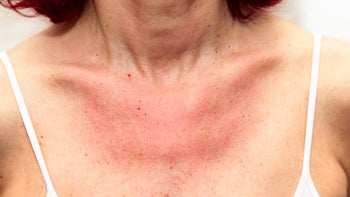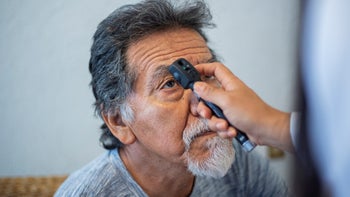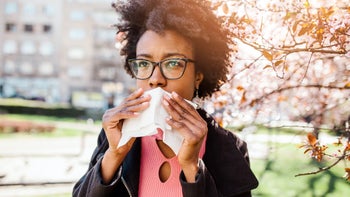GoodRx Guide
Allergies
Comprehensive information for you or a loved one — including treatment options and discounts on popular medications.Definition
Allergies and allergy symptoms affect more than 100 million Americans each year. They’re the sixth-leading cause of chronic illness in adults in the U.S. and the most common cause of chronic illness in children.
Allergies are what happens when the immune system overreacts to a harmless trigger in the environment. It’s a case of mistaken identity: Immune cells responsible for protecting the body against germs misidentify and react to a harmless substance.
The allergic reaction is what happens in the body when the immune system reacts to this false threat.
The most common types of allergies are:
Indoor and outdoor allergies
Drug allergies
Insect allergies
Symptoms
Allergy symptoms can range from a mild runny nose to life-threatening anaphylaxis. Symptoms usually — but not always — affect the part of the body that comes into contact with the trigger.
Common allergy symptoms (and their types) include:
Allergic rhinitis: Sneezing, congestion, and itchy and runny nose
Asthma: Wheezing, chest tightness, breathlessness, and cough
Allergic conjunctivitis: Itchy, red, and watery eyes
Food allergies: Stomach pain, nausea, vomiting, and diarrhea
Eczema: Dry, red, and cracked skin
Contact dermatitis: Red, itchy skin rash
Hives: Raised, itchy skin
Angioedema: Swollen lips, tongue, eyes, or face
Related Health Conditions
Search and compare options
Causes and triggers
Many things in the environment can cause allergies. These harmless triggers are called “allergens.”
Allergens will be different for different people, depending on the allergy they have. These are some common allergens that cause allergies:
Indoor and outdoor allergies: Plant pollens, mold spores, dust mites, and pet dander
Skin allergies: Poison ivy and oak, some foods, and latex
Food allergies: Milk, soy, eggs, wheat, peanuts, tree nuts, fish, and shellfish
Drug allergies: Commonly, penicillin antibiotics
Insect allergies: Bee and wasp stings, poisonous ant bites, cockroaches, and dust mites
Despite what you may have heard, these things don’t cause allergies:
E-numbers (food additives)
Genetically modified foods
Fast food
Immunizations
To be allergic to something, you have to be sensitized to it. This means your body must have come into contact with that substance in your life and made a memory (antibodies) against it. Experts aren’t exactly sure why this happens.
Risk factors
Allergies can happen in anyone, but they’re more likely if you have a genetic risk for allergies (known as “atopy”).
Here are some facts about a person’s chances of inheriting allergies:
A child whose parents don’t have allergies has roughly a 15% risk of having allergies.
If one parent has allergies, that risk goes up to 50%.
If both parents have allergies, the risk of allergies in the child can be as high as 80%.
Diagnosis
Are you not sure whether you have an allergy? Can you not figure out what’s causing your allergies? Or, are the treatments you’re taking not helping? If so, then you may need the help of an allergy specialist.
For allergy testing to be useful, you need to have a clear link between a trigger and a symptom. In other words, you notice symptoms after coming in contact with a particular trigger. An allergy specialist can test you for that trigger with an allergen challenge. This involves pricking the skin with very small amounts of the allergen (and related allergens) to see if your skin reacts to it.
If you don’t have clear symptoms, then allergy tests usually cannot help to diagnose an allergy. Testing for allergies without any clear history of allergic reactions can give misleading results.
Once your allergy is confirmed, you’ll know what you need to avoid. If avoidance of your particular trigger isn’t possible, then your allergy specialist will be able to recommend treatments to keep your symptoms under control.

Treatments
The first and best treatment for allergies is to avoid the trigger. Next, medications can help treat symptoms. These medications can also prevent symptoms when taken before exposure to the allergen(s).
Many people with mild allergies can control their symptoms with over-the-counter (OTC) medications and by avoiding the trigger.
But, sometimes, trigger avoidance isn’t possible, or it’s not enough to prevent symptoms. Other times, OTC medication doesn’t work well enough to treat allergy symptoms.
Medications
The main categories of allergy medications are antihistamines, corticosteroids, and decongestants. They can be taken orally. Or they can be used topically as:
Eye drops
Inhalers
Nasal sprays
Skin creams
Lotions
Ointments
For food allergies, there’s a newer FDA-approved injectable medication called Xolair (omalizumab).
Antihistamines
Antihistamines block the effects of histamine, the chemical responsible for symptoms like itching, runny nose, and sneezing. These medications can prevent allergy symptoms (if taken before you come into contact with the trigger). And they can help improve the symptoms (if taken afterward). Examples include:
Diphenhydramine (Benadryl)
Loratadine (Claritin)
Cetirizine (Zyrtec)
Fexofenadine (Allegra)
Corticosteroids
These are powerful anti-inflammatory medications, which can help with short-term treatment of irritation, redness, swelling, itching, or pain. Examples include:
Prednisone (Deltasone) — oral
Budesonide (Rhinocort) — nasal spray
Hydrocortisone (Cortizone, Pandel) — cream
Decongestants
These can ease symptoms of a stuffy nose (nasal congestion) by reducing the swelling of blood vessels in your nose. You can take them alone, such as pseudoephedrine (Sudafed). Or you can take them in combination with antihistamines, such as loratadine / pseudoephedrine (Claritin-D).
Xolair
Xolair (omalizumab) is an injectable medication that’s FDA-approved for the treatment of food allergies. It’s a medication you take every 2 to 4 weeks. It lowers the risk and severity of allergic reactions due to accidental exposure to one or more foods.
Xolair doesn’t take the place of careful allergen avoidance. And, in the case of serious allergic reactions (like anaphylaxis), it isn’t a substitute for injectable epinephrine.
Immunotherapy
Immunotherapy is a specific treatment for a small number of people with severe and persistent allergies who don’t find relief from their symptoms with other treatments. It involves taking small doses of the allergic trigger (allergen) over the course of several years. It aims to help your body get used to the allergen, so your allergy becomes milder and more manageable. The allergen can be administered either as a shot (SCIT) or as a drop (SLIT).
If you are taking injections, these have to be given by a specialist doctor in a particular type of clinic, as there’s a small risk of a severe reaction. The drops (or tablets) can be taken at home.
Frequently asked questions
There are eight foods responsible for almost all food allergy reactions:
Milk
Soy
Eggs
Wheat
Peanuts
Tree nuts (like almonds)
Fish
Shellfish
For children, the most common food allergies are for milk, eggs, and peanuts. For adults, the most common food allergies are for fruits, nuts, fish, and shellfish.
Many (but not all) food allergies are actually intolerances. They are caused by a problem in the gut, rather than an overactive immune system mounting an attack against that food. The symptoms of a food intolerance might be bloating or constipation. This is different from the symptoms of a true food allergy (rashes, hives, nausea, or vomiting), which are caused by the immune system releasing histamine and other similar chemicals into the blood.
For people with seasonal allergies, it’s best to take allergy medication every day. If possible, it helps to start taking medication ahead of time. Some medications, such as fluticasone (Flonase), take a while to give maximum benefits. If you’re taking your allergy medication daily without relief, it might be time to switch to a different medication.
References
American College of Allergy, Asthma & Immunology. (2023). Allergy facts.
American College of Allergy, Asthma & Immunology. (2023). Food allergy.
Asthma and Allergy Foundation of America. (2024). Allergy facts and figures.
Chad, Z. (2001). Allergies in children. Paediatrics and Child Health.


































